Today, I would like to introduce Kyoto Gyoen and Kyoto Imperial Palace in Kamigyo-ku, Kyoto City.
※The Kyoto Imperial Palace in Kyoto Gyoen was not able to visit unless you applied in advance, but it was open to the public all year from 2016 except Monday (the next day if it is a national holiday) and year-end and New Year holidays.
Well, Kyoto Gyoen is a park managed by the government.This is the one that the former imperial household garden ground was opened to the people.

Kyoto Gyoen is a vast site of about 700 meters east-west and 1,300 meters from north to south. The grounds of the Kyoto Imperial Palace, Kyoto Sento Imperial Palace, and Kyoto Omiya Imperial Palace are managed by the Imperial Household Agency, opened in 2005 the Kyoto Guest House is the Cabinet Office, and the other is Ministry of the Environment.
The tsuiji wall ( fence ) in the photograph is a wall that surrounds more than ten palaces of the Kyoto Imperial Palace, and from 1331 to 1869, it is a place where ceremonies and public duties were held in addition to the emperor’s use as a residence.
By the way, there are two names called “Kyoto Gyoen” and “Kyoto Imperial Palace”, so kyoto gyoen represents the entire site of this vast area, and “Kyoto Imperial Palace” refers to the old Imperial Palace in Kyoto Gyoen.

It is tsuiji wall of Kyoto imperial palace.I think you can see five white lines on the wall.This is called a suji wall, and it becomes the one used for facilities related to the imperial family such as the imperial palace. Three to five lines are drawn according to the class of the building. The Kyoto Imperial Palace is the highest five.
If you look at the gravel, you will notice that there is another white line.This sixth white line is the passage where the bicycle ran. Because it is hard to run on gravel, it is the one that it was able to do naturally by running on the road with little resistance of gravel.
もくじ
- Kyoto Imperial Palace / Yishumon
- Kyoto Imperial Palace / Okurumayose
- Kyoto Imperial Palace / Shodaibunoma
- Kyoto Imperial Palace / Shinmikurumayose
- Kyoto Imperial Palace / Kenreimon
- Kyoto Imperial Palace / Shishinden
- Kyoto Imperial Palace / Shunkoden
- Kyoto Imperial Palace / Kogosho
- Kyoto Imperial Palace / Oike Garden
- Kyoto Imperial Palace / Otsunegoden
- Kyoto Imperial Palace / Rest place for visitors
- Kyoto Gyoen March – April
- Kyoto Gyoen / August
Kyoto Imperial Palace / Yishumon
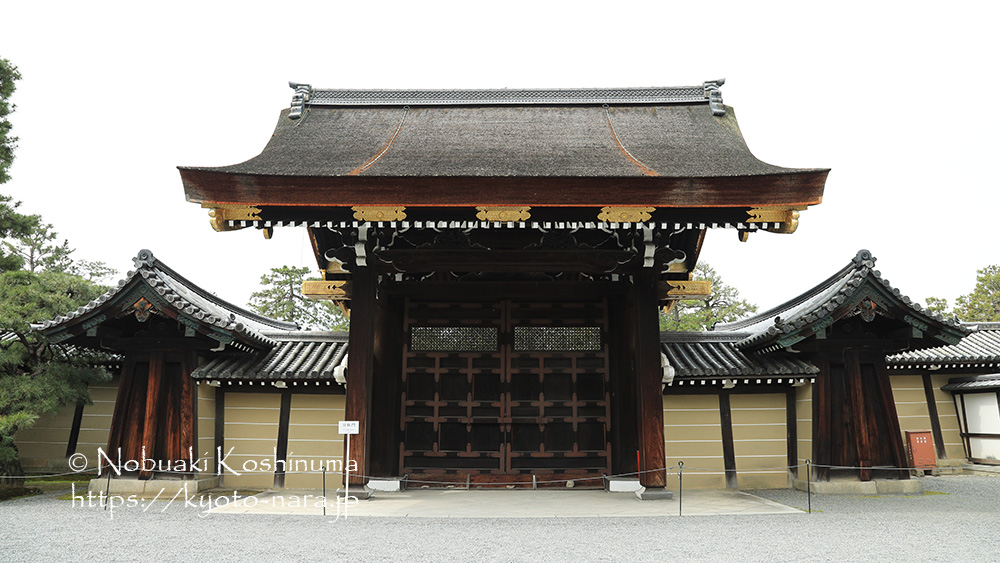
There are six gates in the Kyoto Imperial Palace. They all looked like great gates, but the gates that can be used vary depending on the user. The Kenrei Gate, which was only used by the Emperor, the Kenshunmon was for the Empress, and the Gishumon Gate in the upper picture was the entrance gates of the prince and the dukes. The general visit to kyoto imperial palace is to be seishomon.
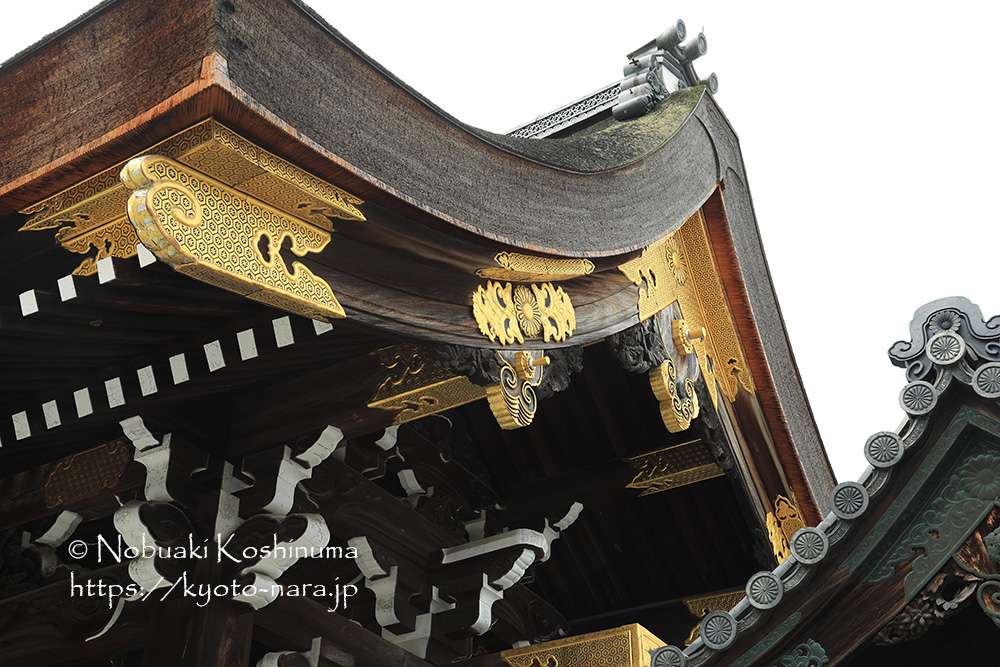
The roof which is carefully stacked with the bark of hinoki, it’s a gate with a impressive.
The roof of Hiwasabuki spread during the Asuka period and became the most prestigious roof method during the Heian period. It was only allowed in the upper aristocratic buildings, and it became a symbol of the height of the their position.
Kyoto Imperial Palace / Okurumayose
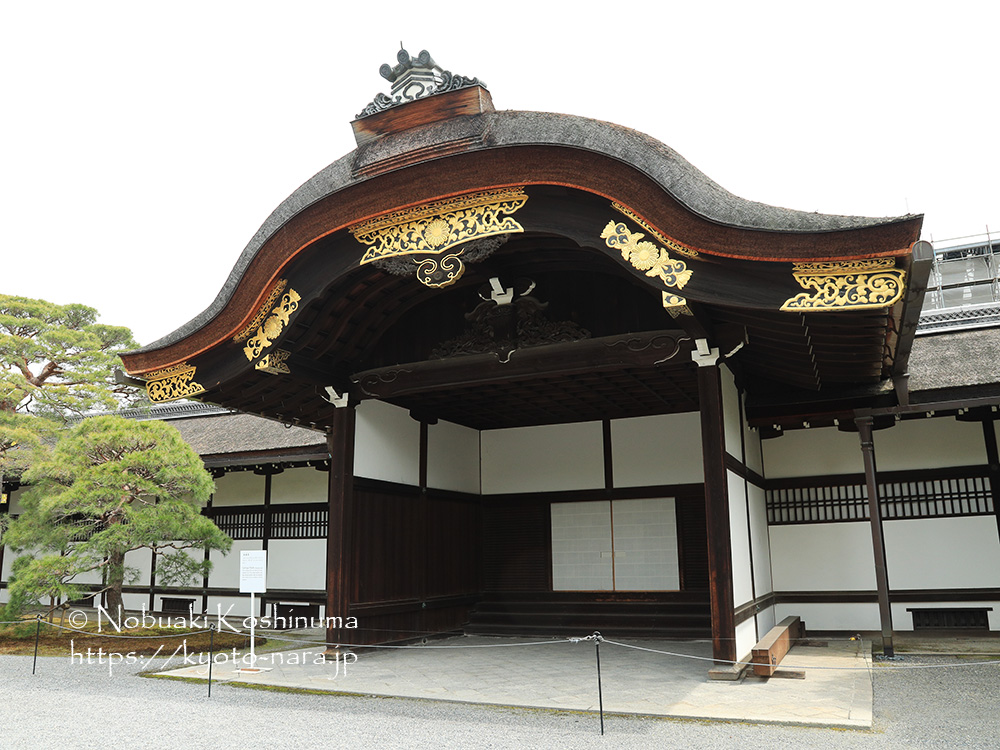
This entrance is the entrance for visitors to attend ceremonies or to meet with the emperor. Only a limited number of people with the permission of the emperor could use this entrance “Okurumayose”.
Kyoto Imperial Palace / Shodaibunoma
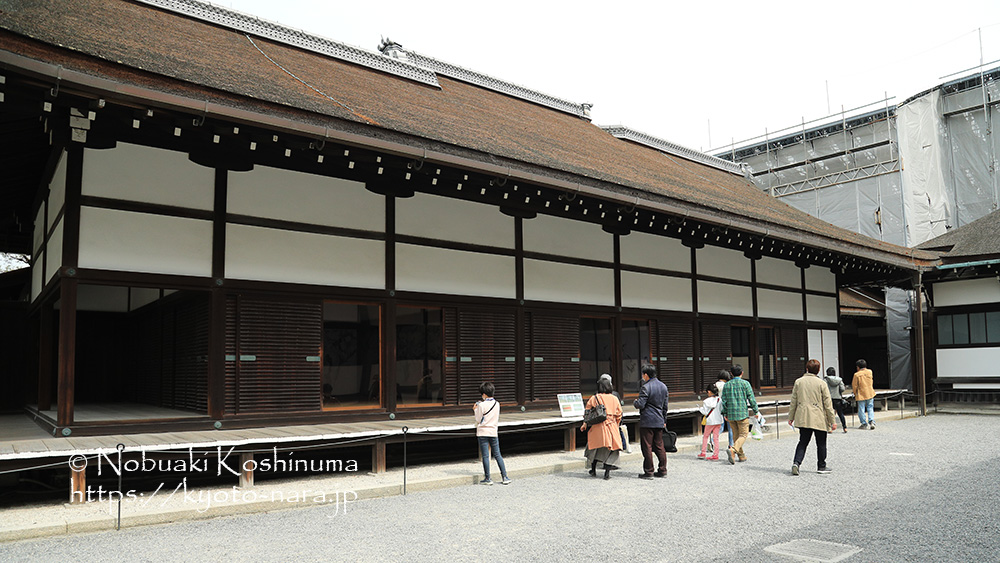
The room where the person who visited waits until meeting with the emperor. There are three different rooms. They would be guided to the room according to the social status of the visitor. (In order of rank, tigers, cranes, and cherry blossoms)
“tigers room” and “cranes room” was for the high social status of the visitor. And they can go to the room through the corridor with the roof of the building from the horse stop( Okurumayose), but between the cherry blossoms, you can go up the stairs from the gravel road around the building and enter the room.
Kyoto Imperial Palace / Shinmikurumayose
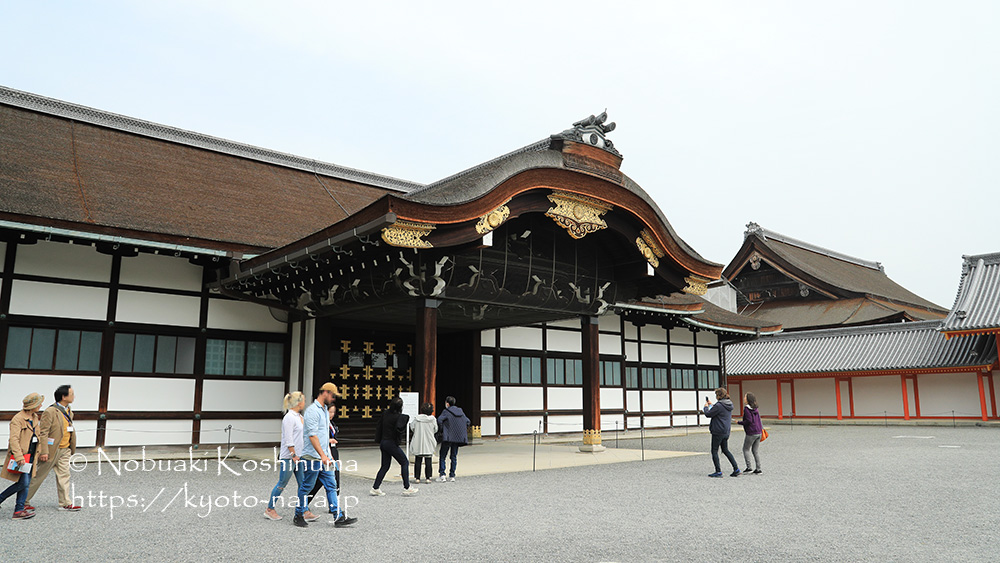
The picture above is ”Shinmikurumayose” for the Carriage.
In the case of baskets for the person and horses that were used during the Heian period, there was no problem with “Okurumayose”
. But with the times, Carriages were used, and a new building was built.
Kyoto Imperial Palace / Kenreimon
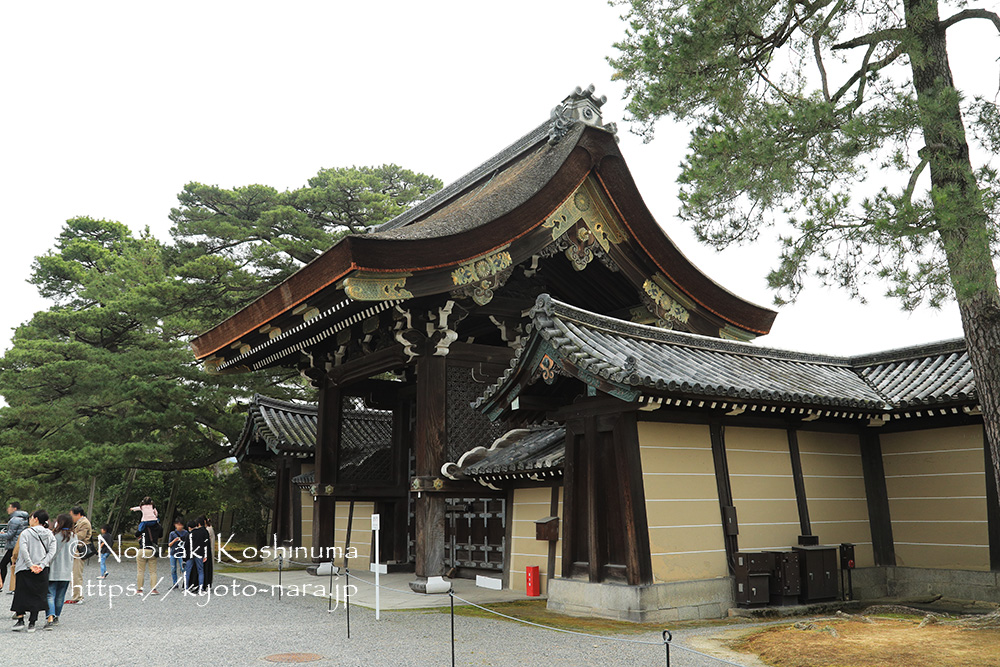
The above photo is the main gate “Kenreimon”, which is facing the south of the Kyoto Imperial Palace. At that time, it was open the gate during the ceremony of the throne and the important ceremony held in The Shishinnden. Today, it is a prestigious gate used by the Emperor and state guests.
Kyoto Imperial Palace / Shishinden
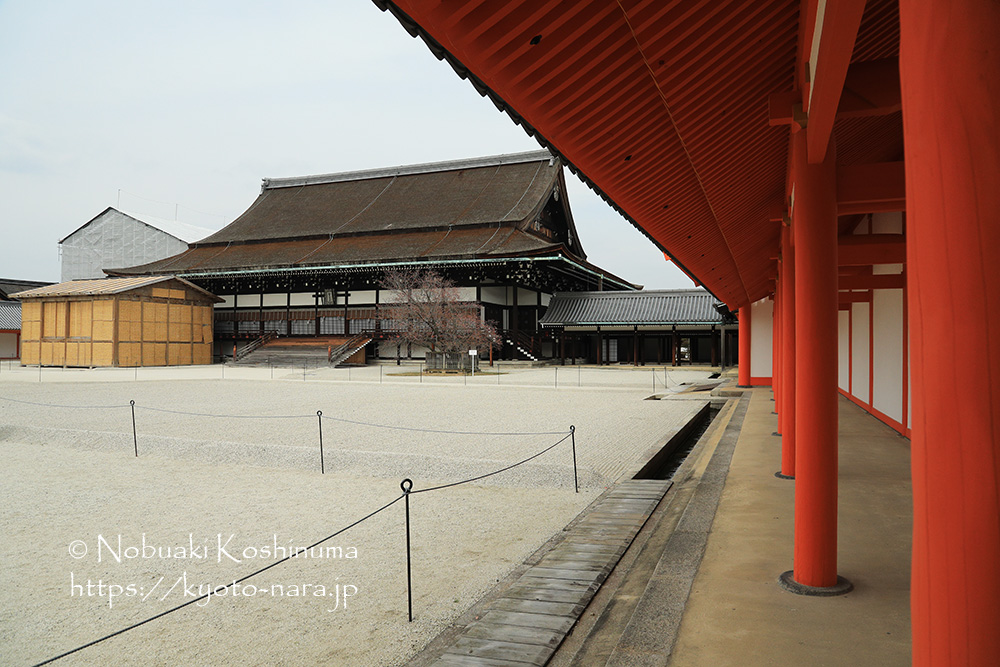
Across from the Kenreimon-Gate, the most prestigious Shoden in kyoto imperial palace sits in the “Shishinden”.
Kyoto Imperial Palace / Shunkoden
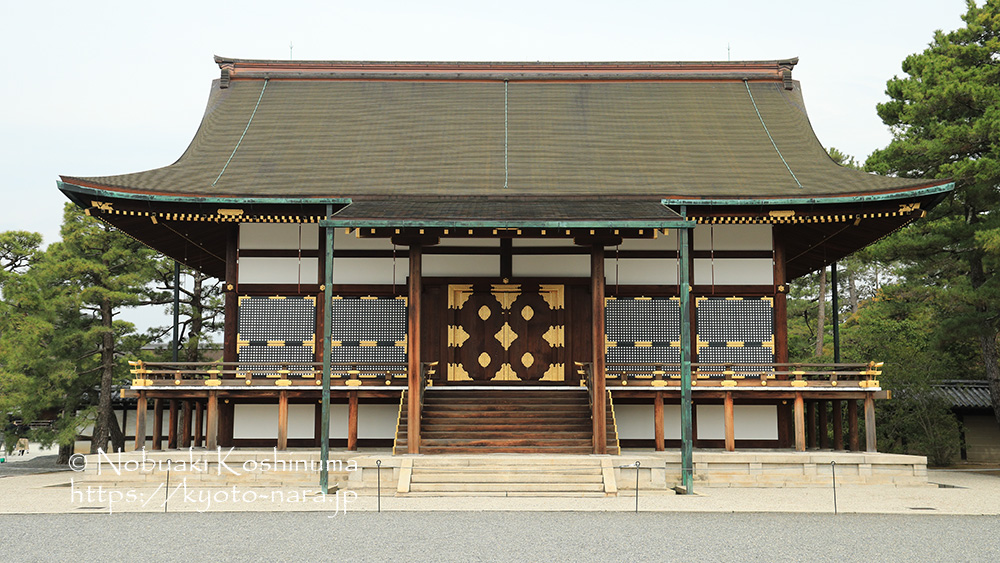
In the southeast of Shishinden, Shunkoden is located.It seems that armor etc. were put.
Kyoto Imperial Palace / Kogosho
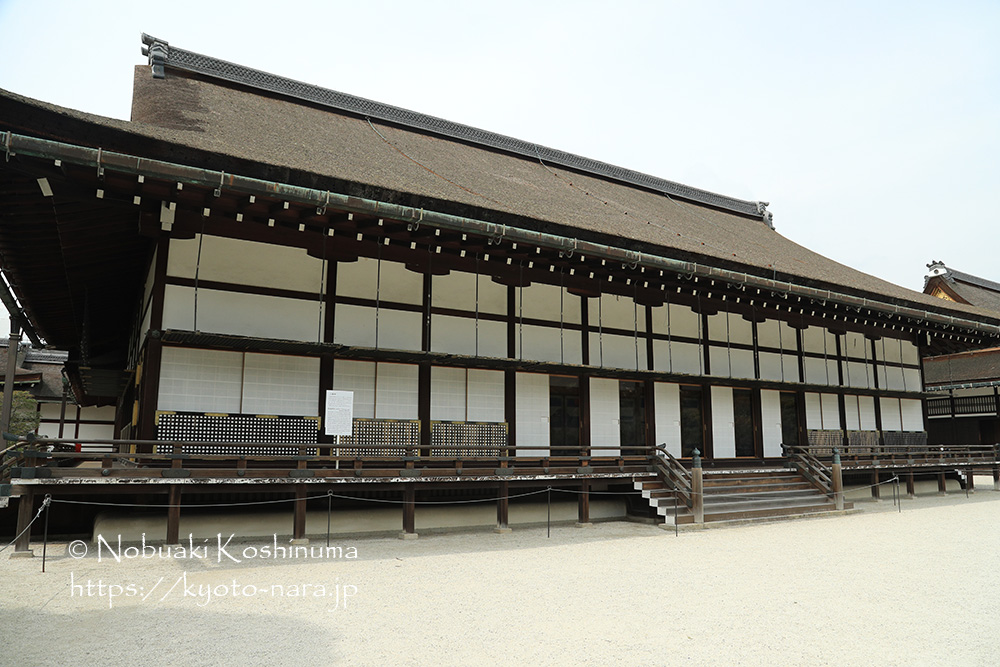
It was mainly used for meetings, and ceremonies such as “genpuku”, which showed the crown prince’s adultlife.
Kyoto Imperial Palace / Oike Garden

A migratory garden centered on a pond.In the back of the right, you will find “Keyakibashi(bridge)”.In the foreground is a stepping stone of the boat landing.
From one tree to a bridge and a stone arrangement, everything was calculated, and it was a beautifully balanced garden.
Kyoto Imperial Palace / Otsunegoden

The Otsunegoden, which was used as the emperor’s residence. It was also used as a place for ceremonies and face-to-face.
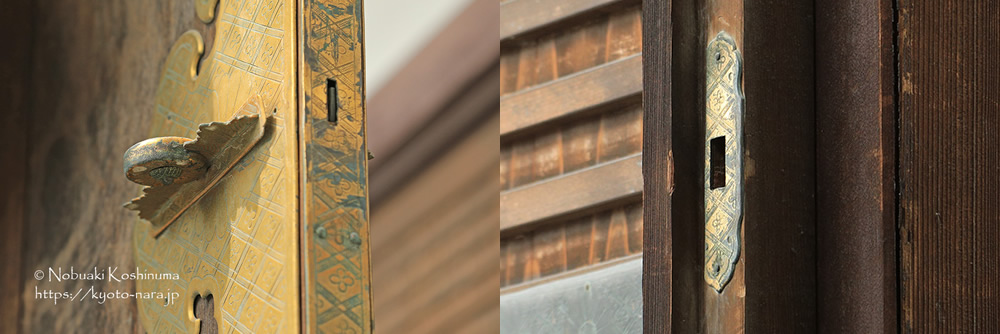
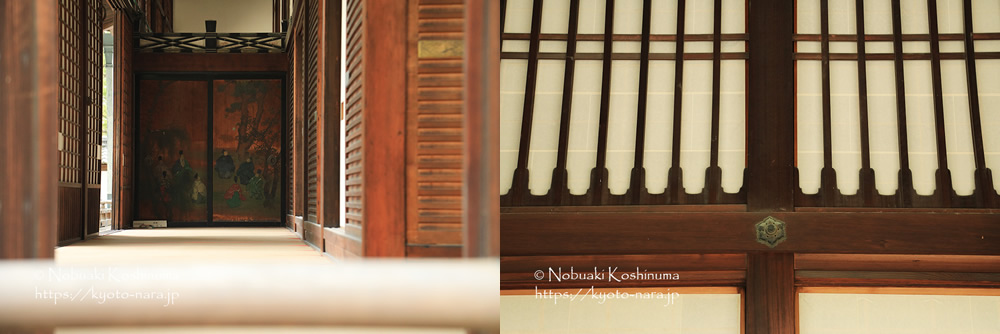
The opening and closing of the door parts and the lattice that takes in the light at the top were all beautiful things in a calm atmosphere.Please try to find a lot of things.
Kyoto Imperial Palace / Rest place for visitors
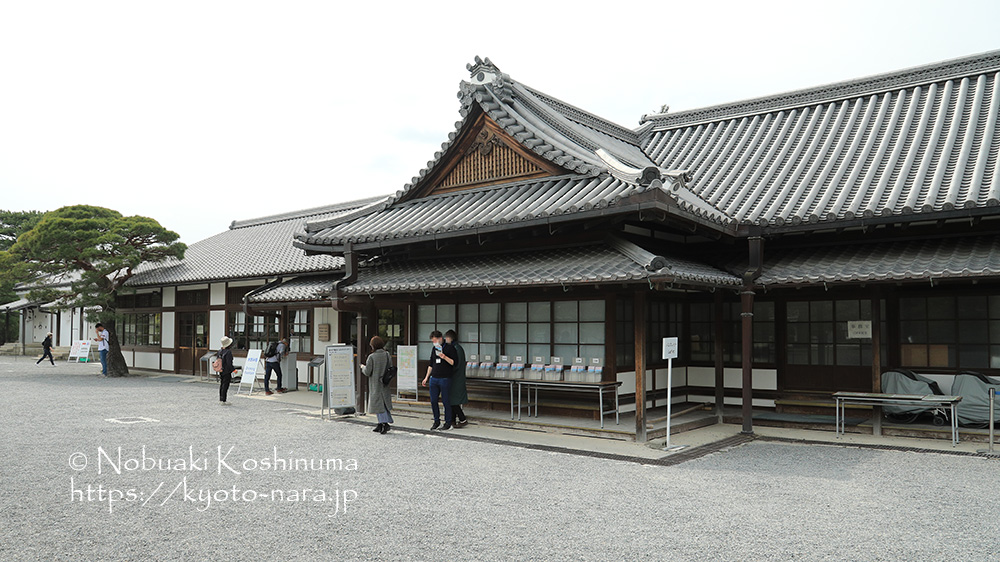
It is the building which comes into view first after the luggage inspection at Seishomon before the visit.Toilets, tables and chairs are available as a resting place for visitors.In the center of the photo is a pamphlet in each language.
Kyoto Gyoen March – April
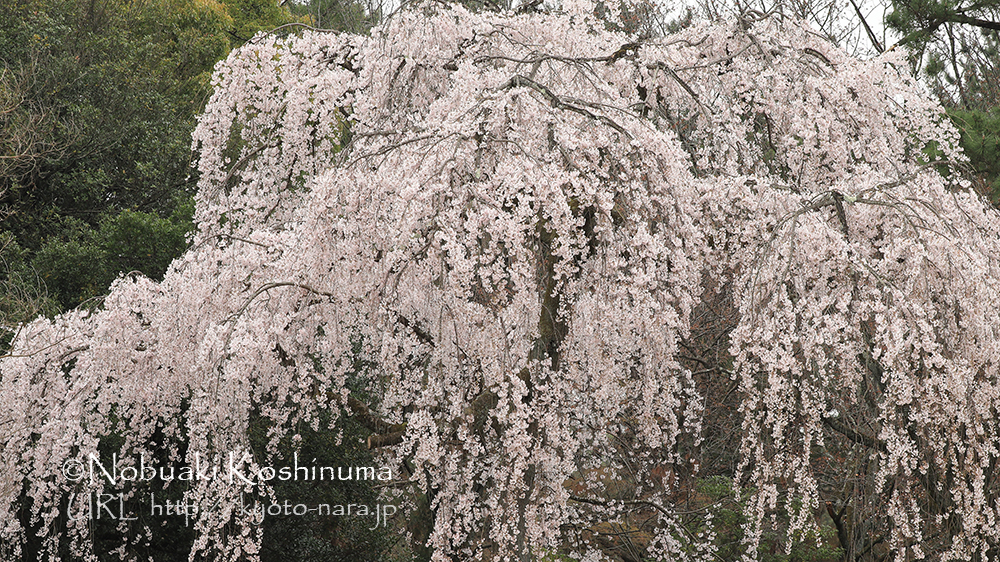
The weeping Demizu cherry blossoms of Kyoto Gyoen. Many people take pictures from the morning and enjoy cherry blossom viewing with stunning branches.
The best time to see cherry blossoms is from March 20th to early April every year.(Confirmation)
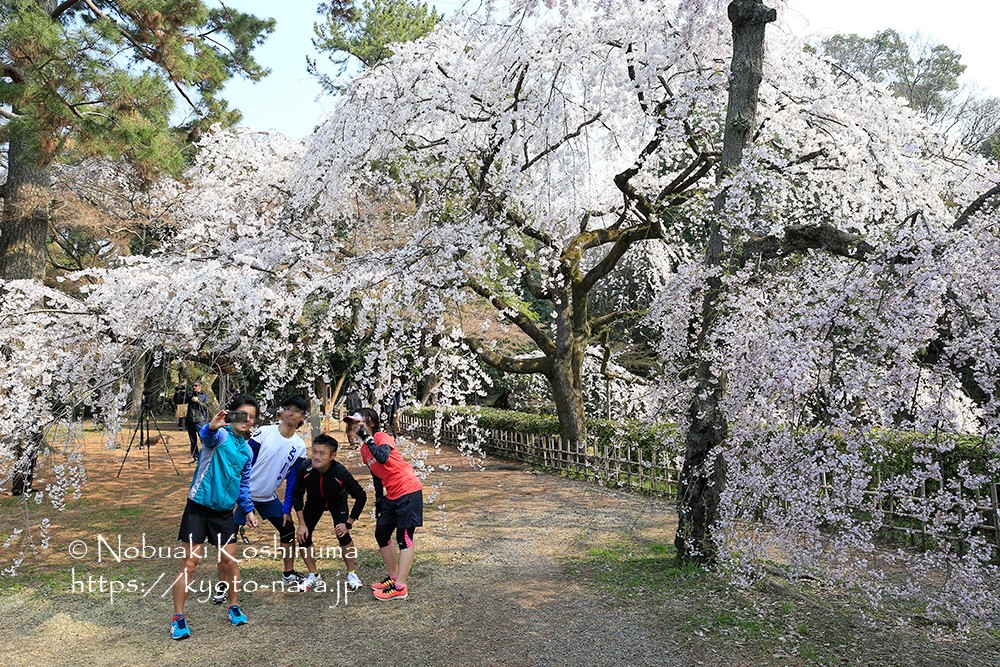
This is where the “Konoefamily” had a large residence. When the Imperial Palace went up in flames, it was said that it became a temporary Imperial Palace.
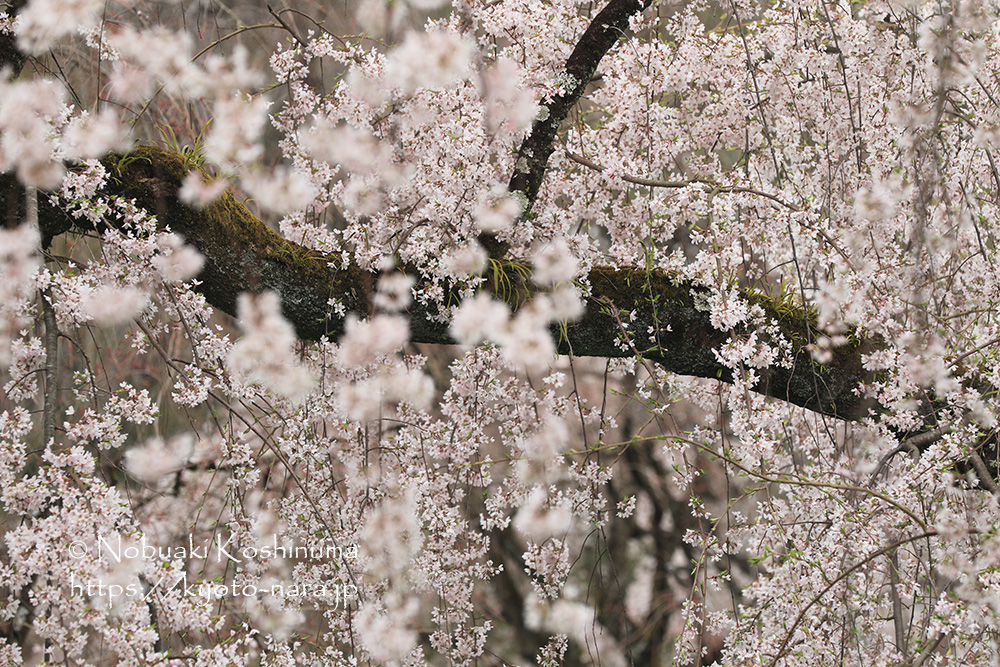
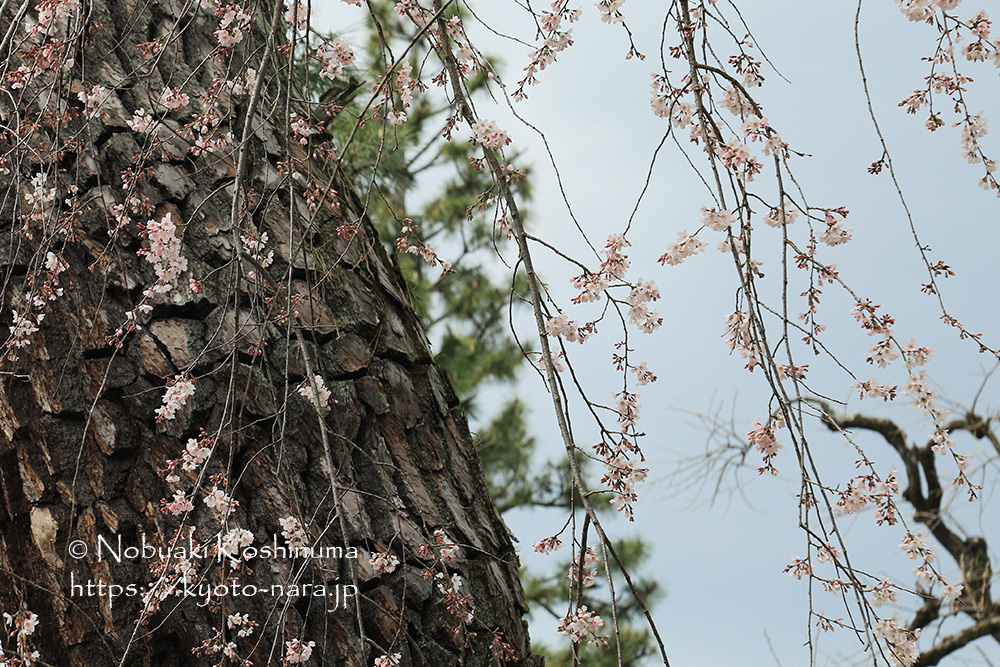
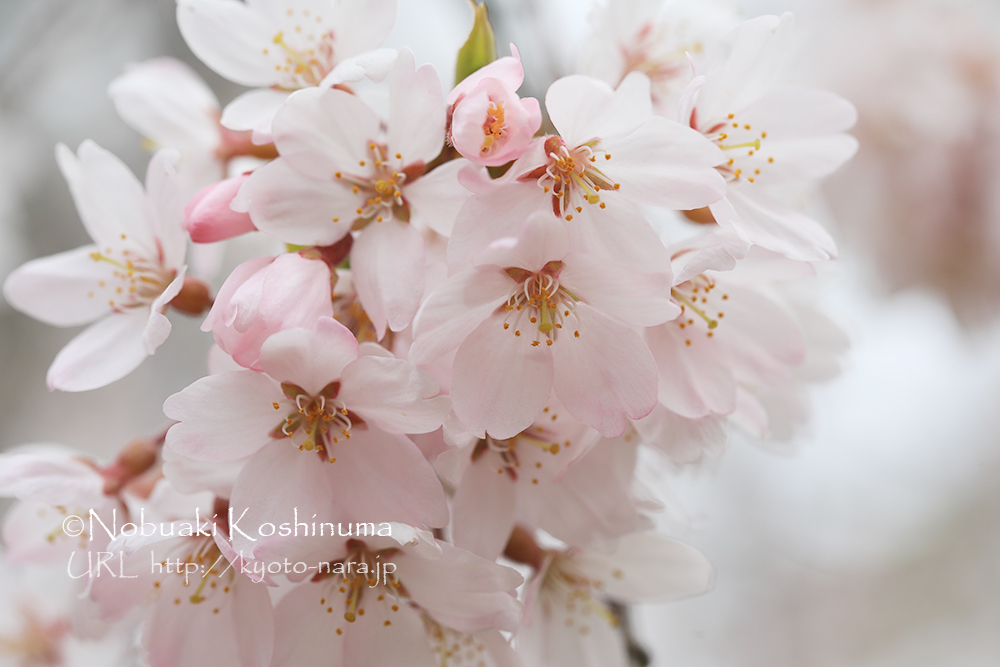
Kyoto Gyoen where cherry blossoms bloom early.Many people come in the morning when the cherry blossom season comes every year.If you want to shoot without anyone, you might want to bring a telephoto lens or a macro lens.
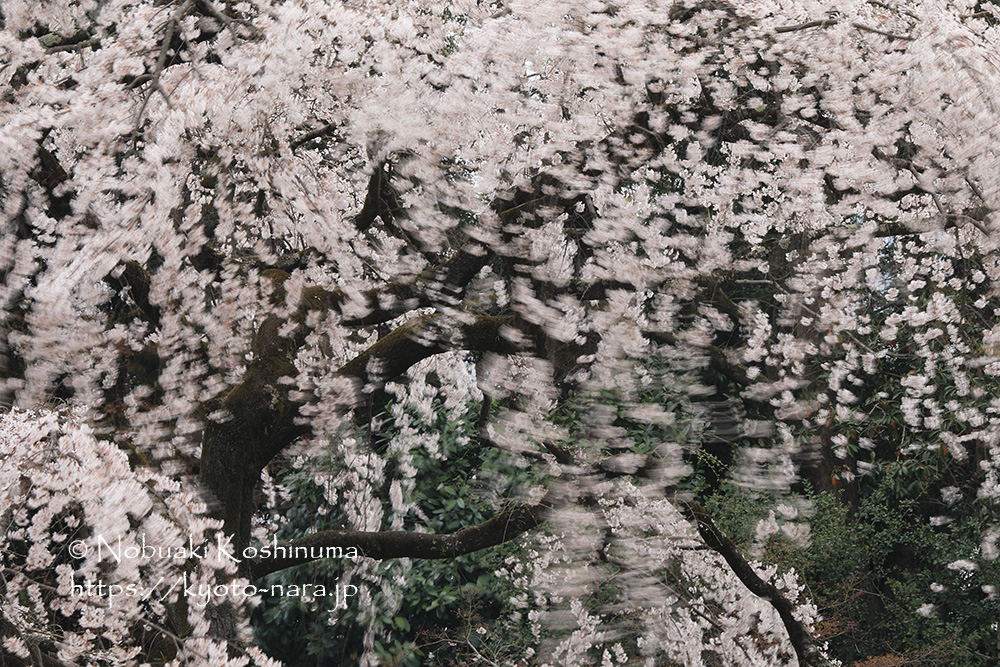
On a fine day, the shutter speed will be faster, so it will be a little more difficult, but if it’s cloudy, it’s also a good idea to take a picture of a branch of cherry blossoms that slow down the shutter speed.
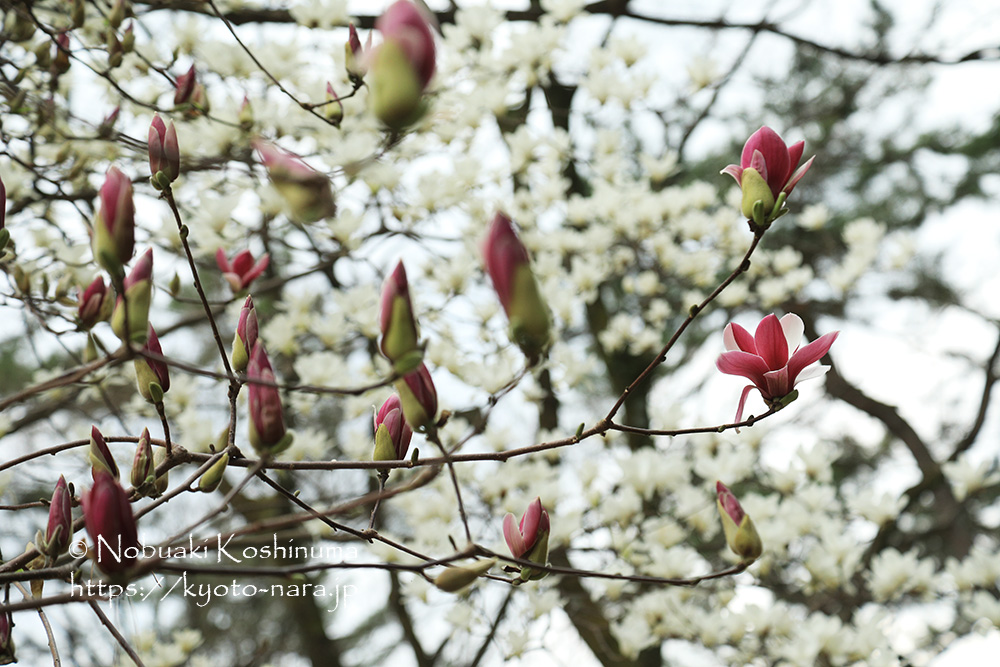
A beautiful magnolia flower that blooms a large circle near the “Sarugatsuji”.

Magnolia flowers are also known as compass flowers because the buds face north.
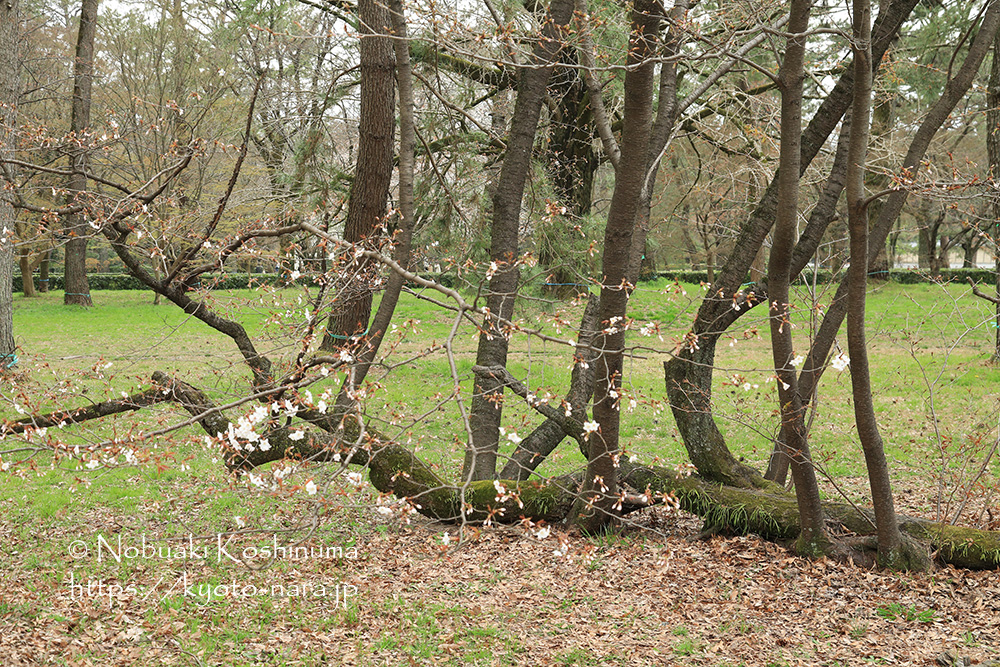
In the picture above, yamazakura grows on a fallen black pine tree and is called “Sakuramatsu”.In the heisei year, the pine died and fell down, but the cherry tree was able to lower its roots to the ground through the pine cavity, and it continues to bloom even now.
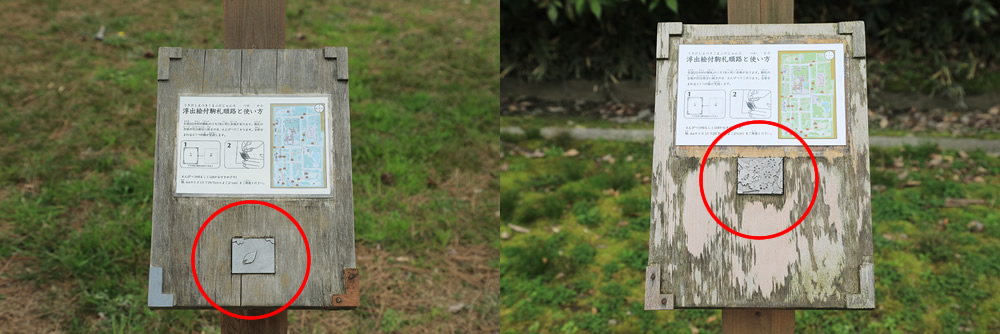
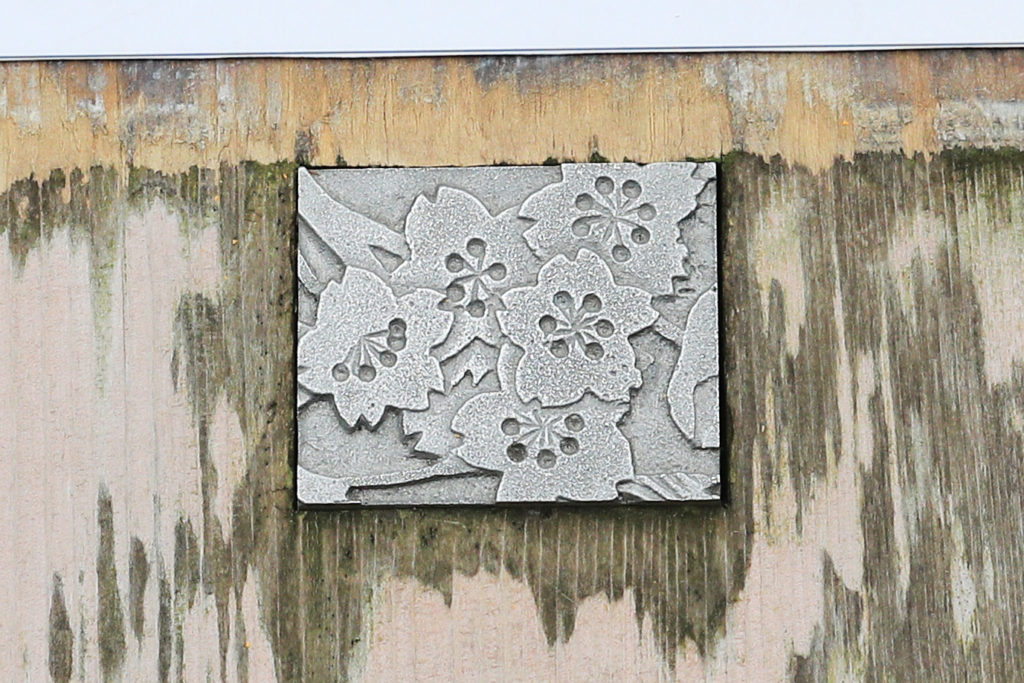
There are 18 places in the garden of Kyoto Gyoen, “Ukidashi-etsuki- komafuda”. Put the paper on the uneven part and rub it with a pencil to complete one picture.
I haven’t tried it yet, but it’s a good idea to bring an A4-size paper and pencil (HB or B). When you go around with a paper and a pencil, kids’ll enjoy it.
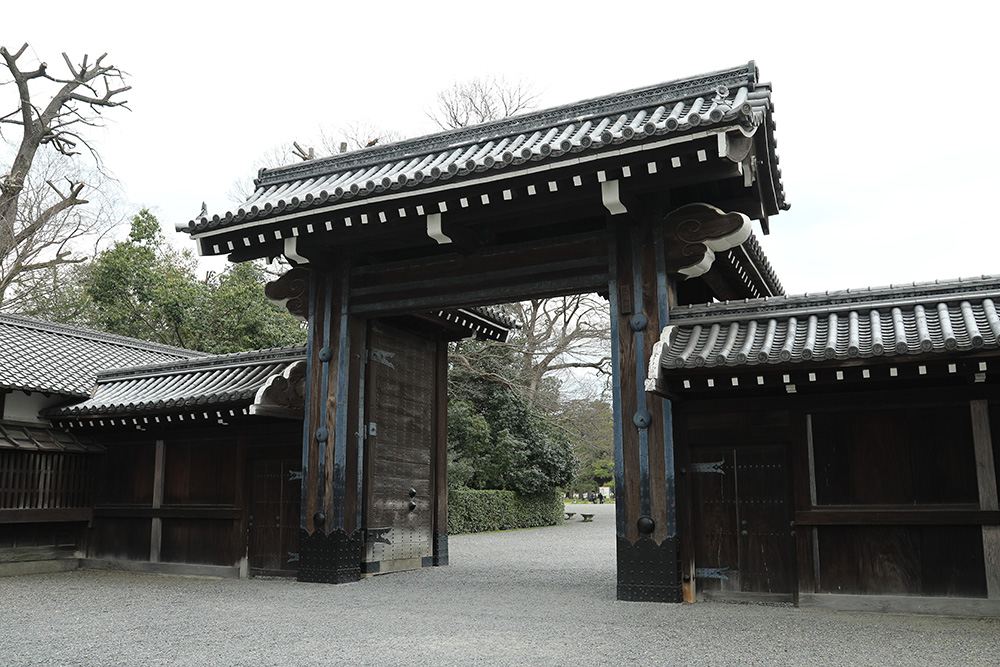
Sakaimachi-gomon is located in the south of Kyoto Gyoen.
There are nine gates to enter the Kyoto Gyoen (Teramachi-gomon, Seiwain-gomon, Ishakushi-gomon, Imadegawa-gomon, Inui-gomon, Nakadachiuri-gomon, Hamaguri-gomon, Shimodachiuri-gomon).
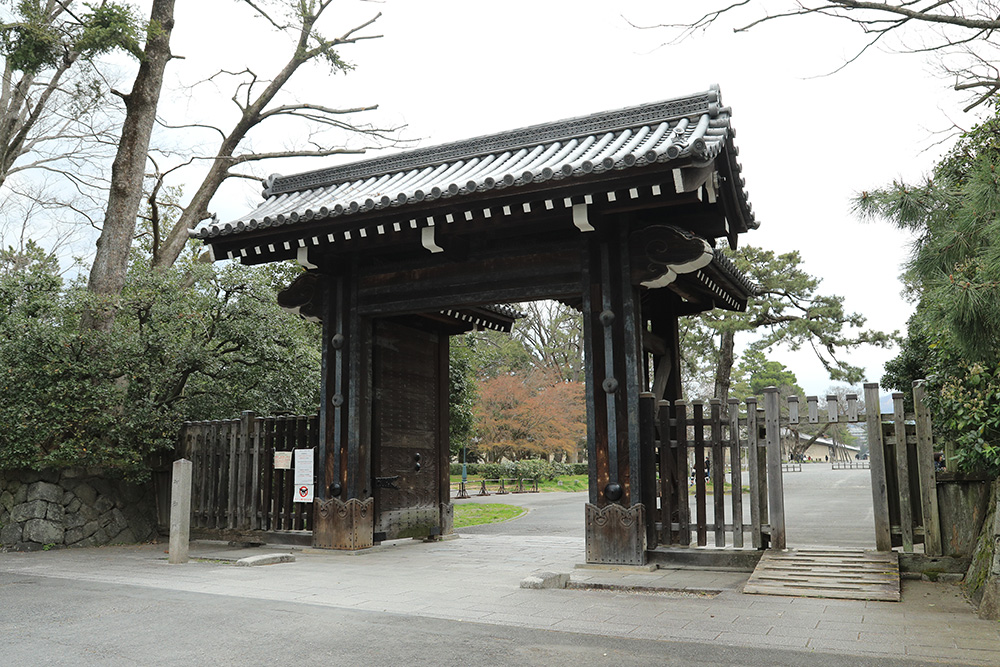
“Hamaguri-gomon”.
“Hamaguri” is clam in English.
The official name is “Shinzaike-gomon”, but when the Imperial Palace burned in the Edo period, the gate opened only at this time, so it was likened to “Clams baked and open mouth”, and it came to be called “Hamaguri(Clam)-gomon”.
There is a covered door on the left and right sides of Sakaimachi-gomon, but the other eight gates are in the same shape as the “Hamaguri-gomon” in the upper picture.
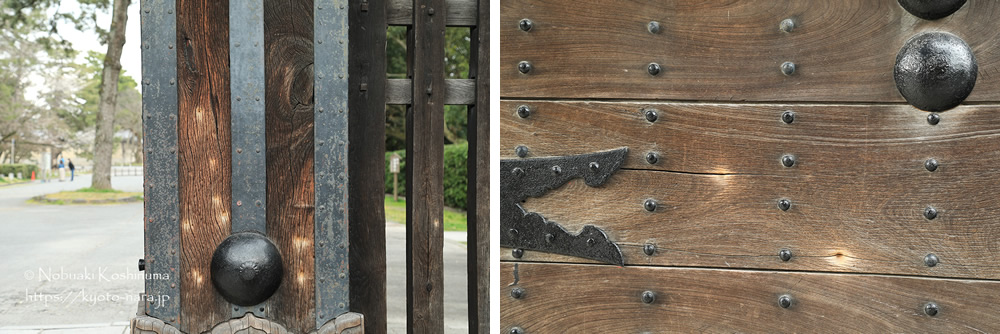
The beam of the gate is left with a bullet-like scar. It is said that this was a bullet mark at the time of the fierce battle between the Aizu Satsuma and Kuwana clans and the Choshu clan which were escorts of the Imperial Palace around this gate in the late Edo period.
Even though the times have passed, it is easy to see that it is white.Please check it out.
Kyoto Gyoen / August
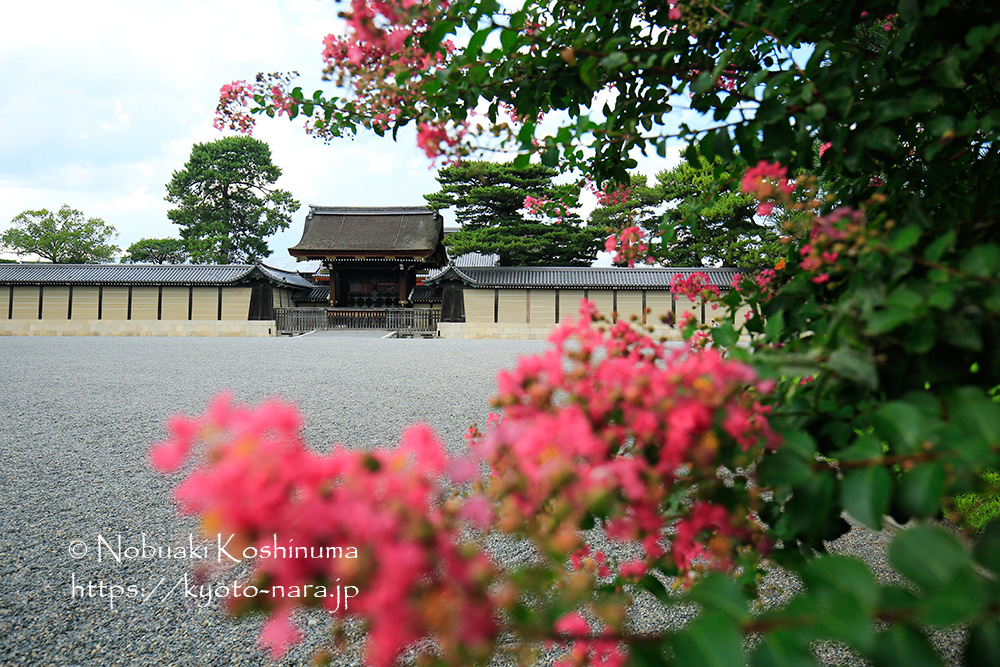
It is Kenreimon of Kyoto Imperial Palace and a Lagerstroemia flower.
As I mentioned earlier, the gate at the left of the center of the picture is located at the south, and is a special gate through which His Majesty the Emperor and state guests can pass.
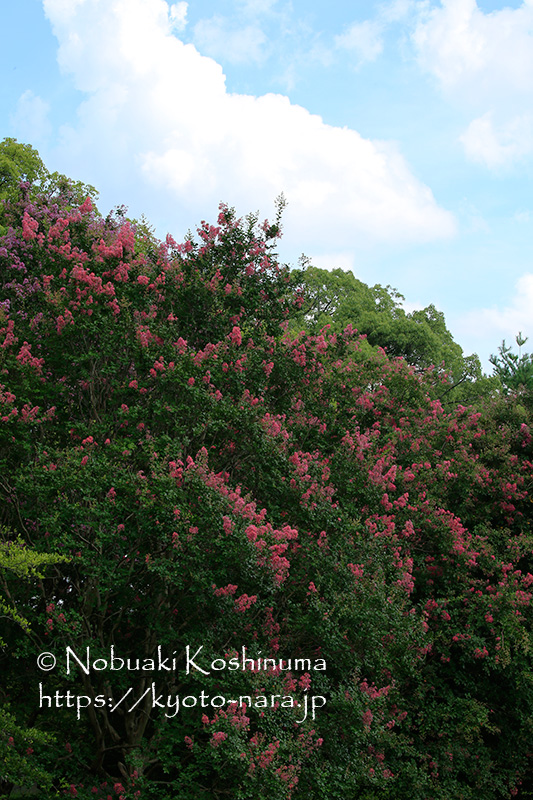
The tree of a Lagerstroemia flower with the height is unusual. Please try to find it.
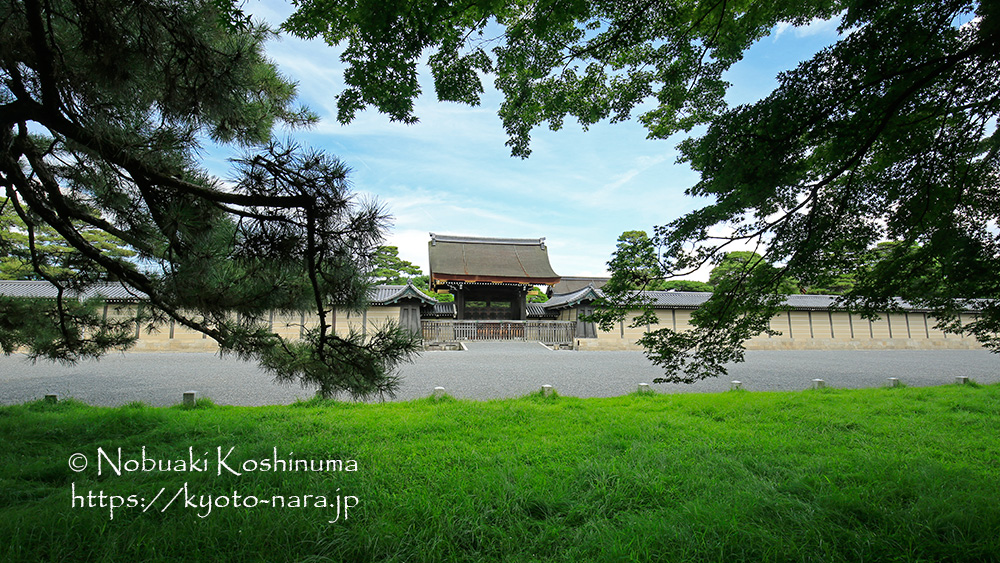
It is a season when green is green and beautiful.
Please take a walk under the big sky while walking in the shade of a tree.
【Visit】 Kyoto Imperial Palace Kyoto Kamigyo-ku Kyoto Gyoen 3
[Admission fee] Free
[public time] 8:30-17:00
【Parking lot】 There is a paid parking lot in the vicinity
[Access] 5-minute walk from Imadegawa Station on the Karasuma Line subway 5-minute walk from Karasuma Imadegawa
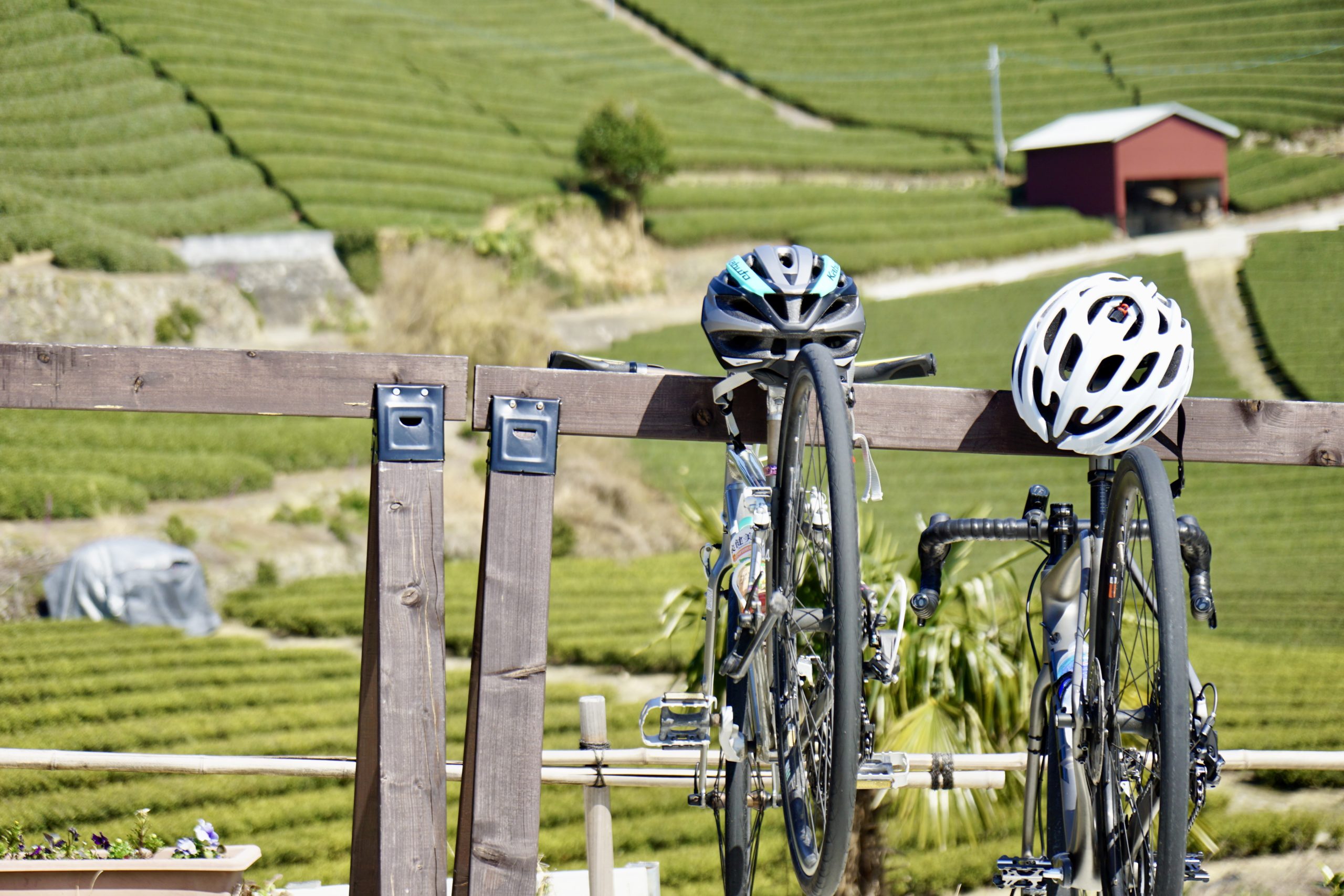

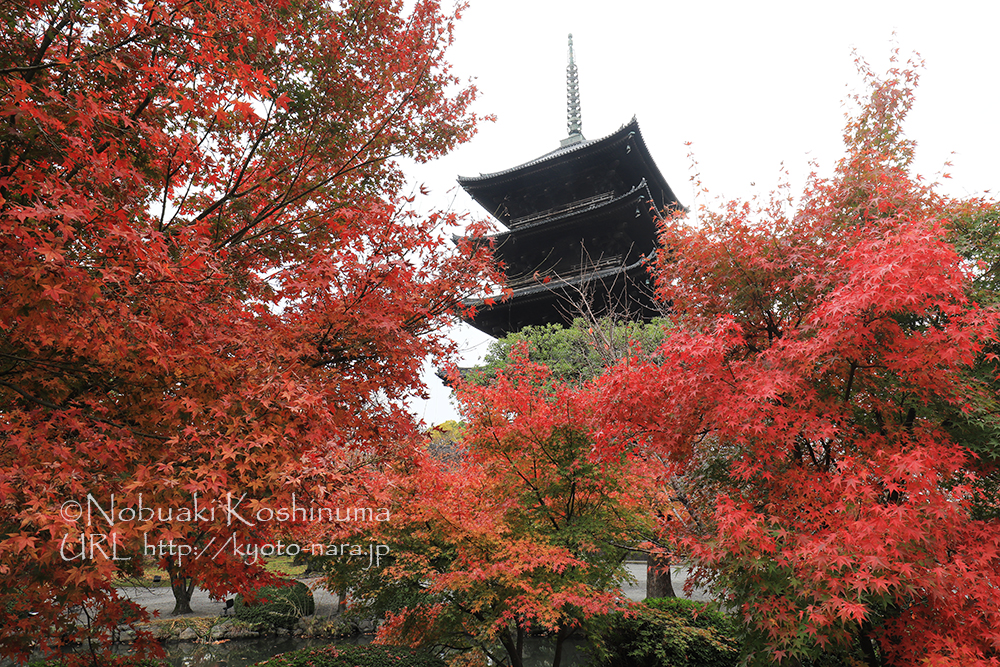

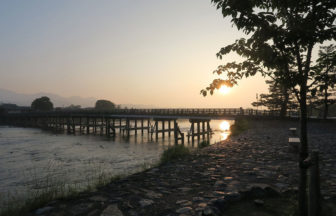

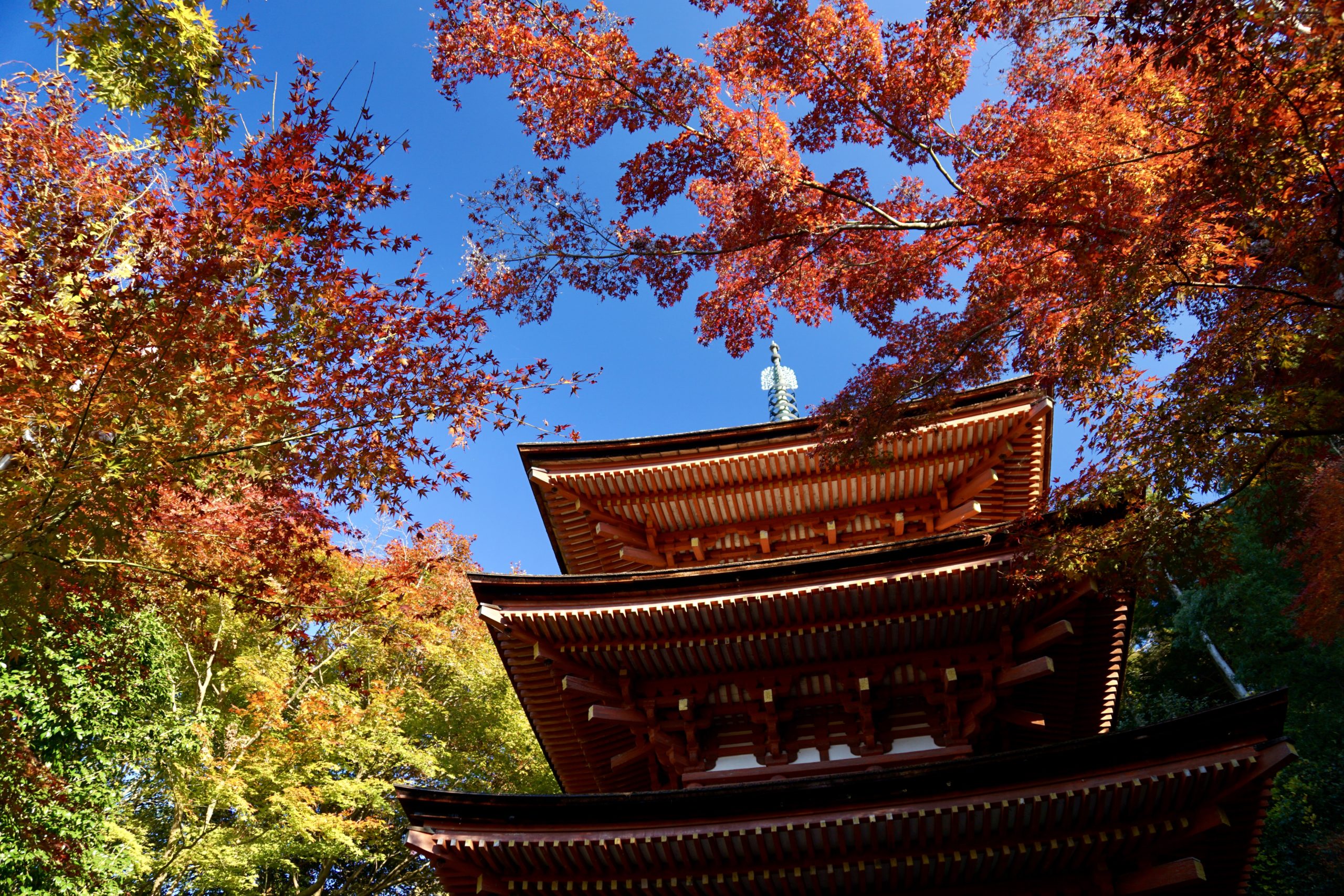
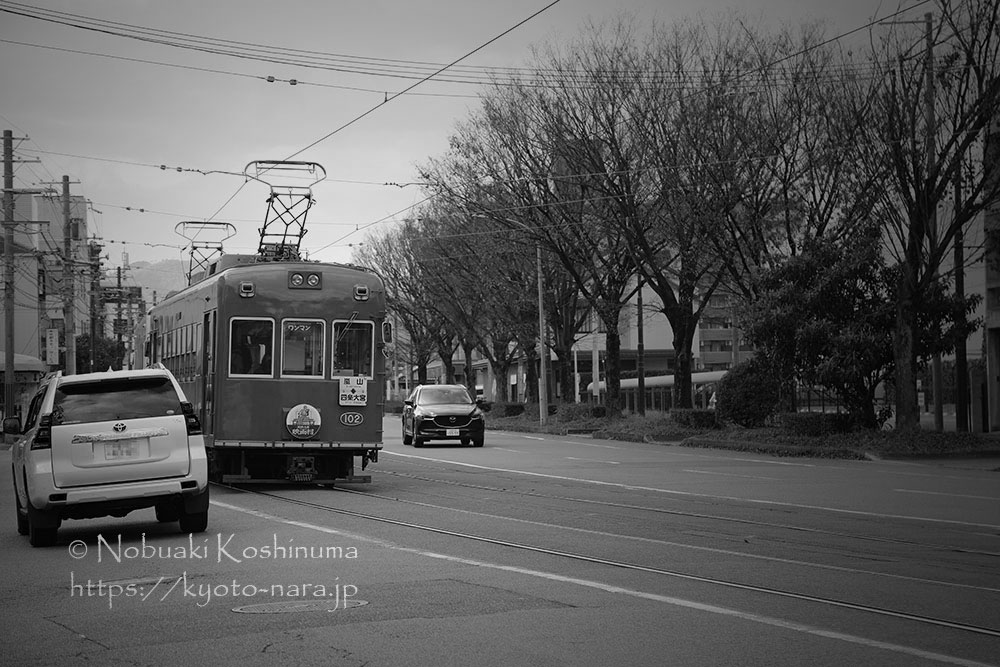


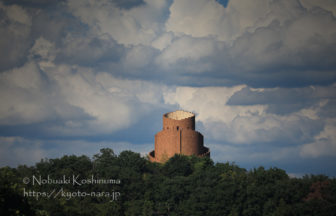


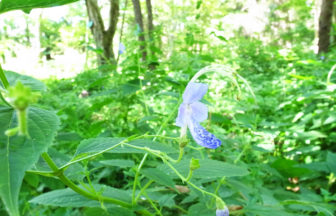


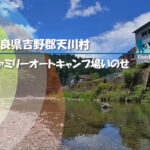
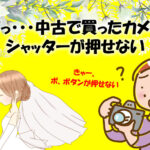



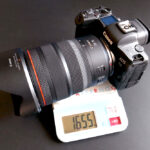

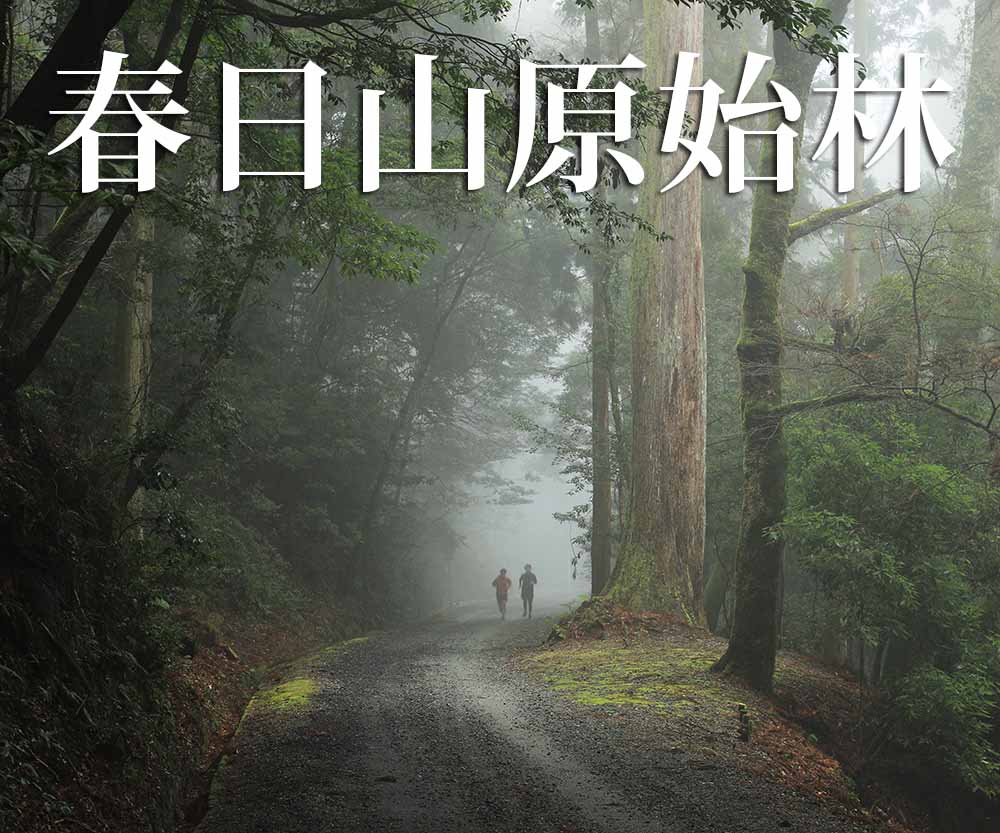


この記事へのコメントはありません。